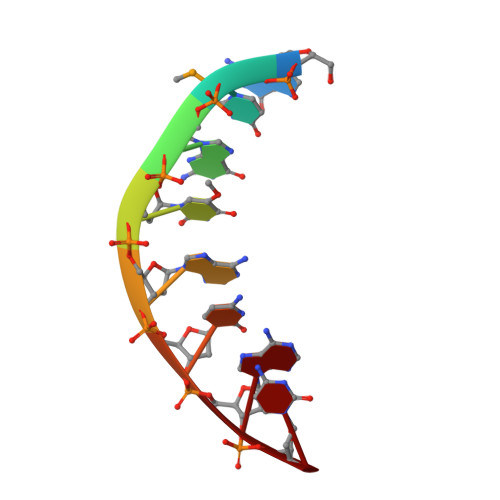Hydrogen bond formation between the naturally modified nucleobase and phosphate backbone.
Sheng, J., Zhang, W., Hassan, A.E., Gan, J., Soares, A.S., Geng, S., Ren, Y., Huang, Z.(2012) Nucleic Acids Res 40: 8111-8118
- PubMed: 22641848
- DOI: https://doi.org/10.1093/nar/gks426
- Primary Citation of Related Structures:
3IKI, 3LTR - PubMed Abstract:
Natural RNAs, especially tRNAs, are extensively modified to tailor structure and function diversities. Uracil is the most modified nucleobase among all natural nucleobases. Interestingly, >76% of uracil modifications are located on its 5-position. We have investigated the natural 5-methoxy (5-O-CH(3)) modification of uracil in the context of A-form oligonucleotide duplex. Our X-ray crystal structure indicates first a H-bond formation between the uracil 5-O-CH(3) and its 5'-phosphate. This novel H-bond is not observed when the oxygen of 5-O-CH(3) is replaced with a larger atom (selenium or sulfur). The 5-O-CH(3) modification does not cause significant structure and stability alterations. Moreover, our computational study is consistent with the experimental observation. The investigation on the uracil 5-position demonstrates the importance of this RNA modification at the atomic level. Our finding suggests a general interaction between the nucleobase and backbone and reveals a plausible function of the tRNA 5-O-CH(3) modification, which might potentially rigidify the local conformation and facilitates translation.
Organizational Affiliation:
Department of Chemistry, Georgia State University, Atlanta, GA 30303, USA.















